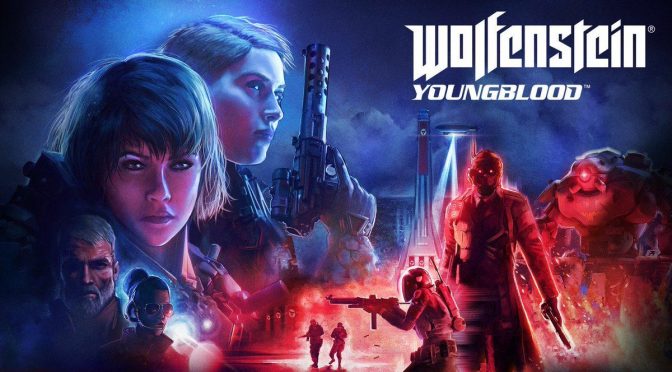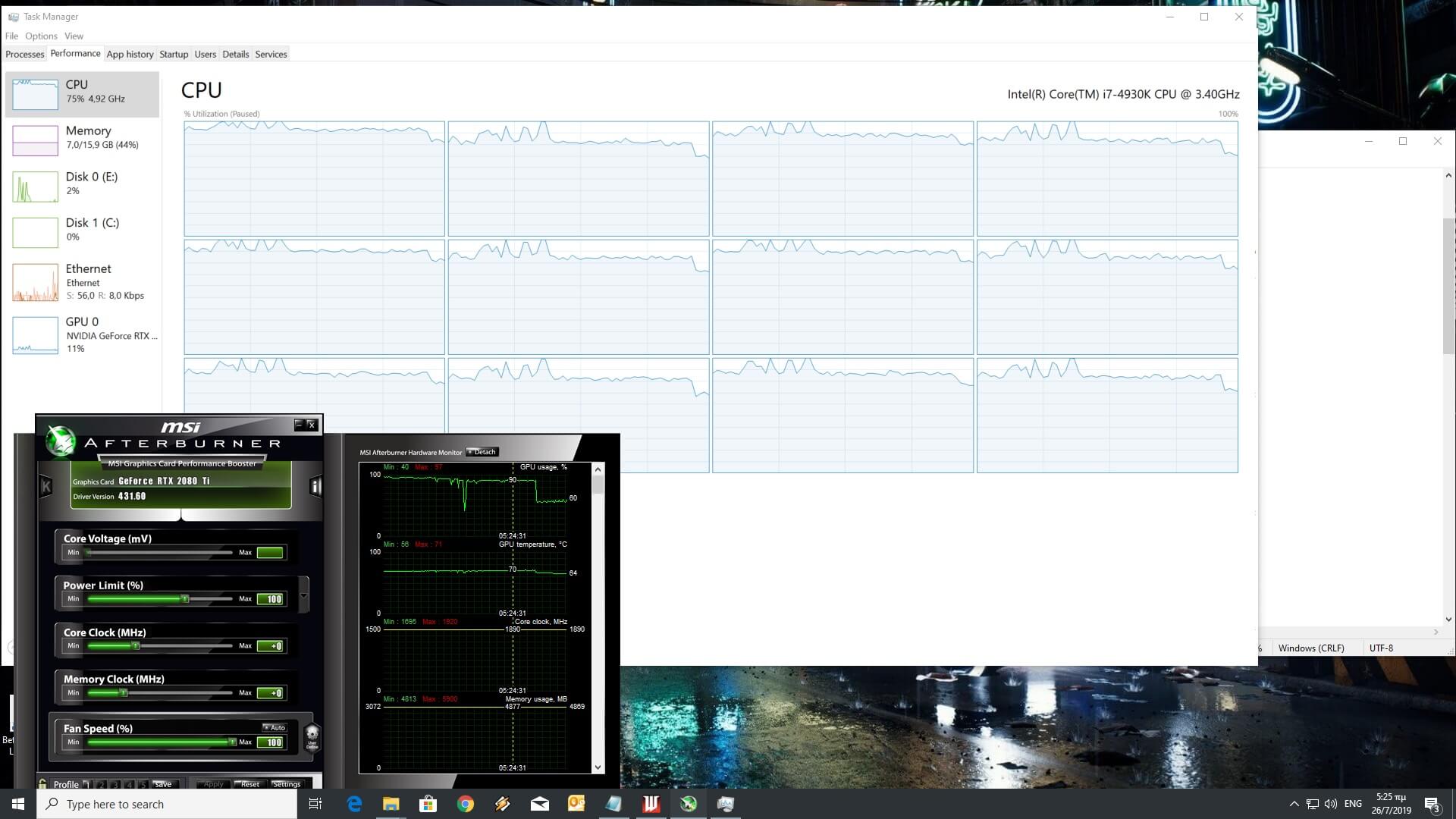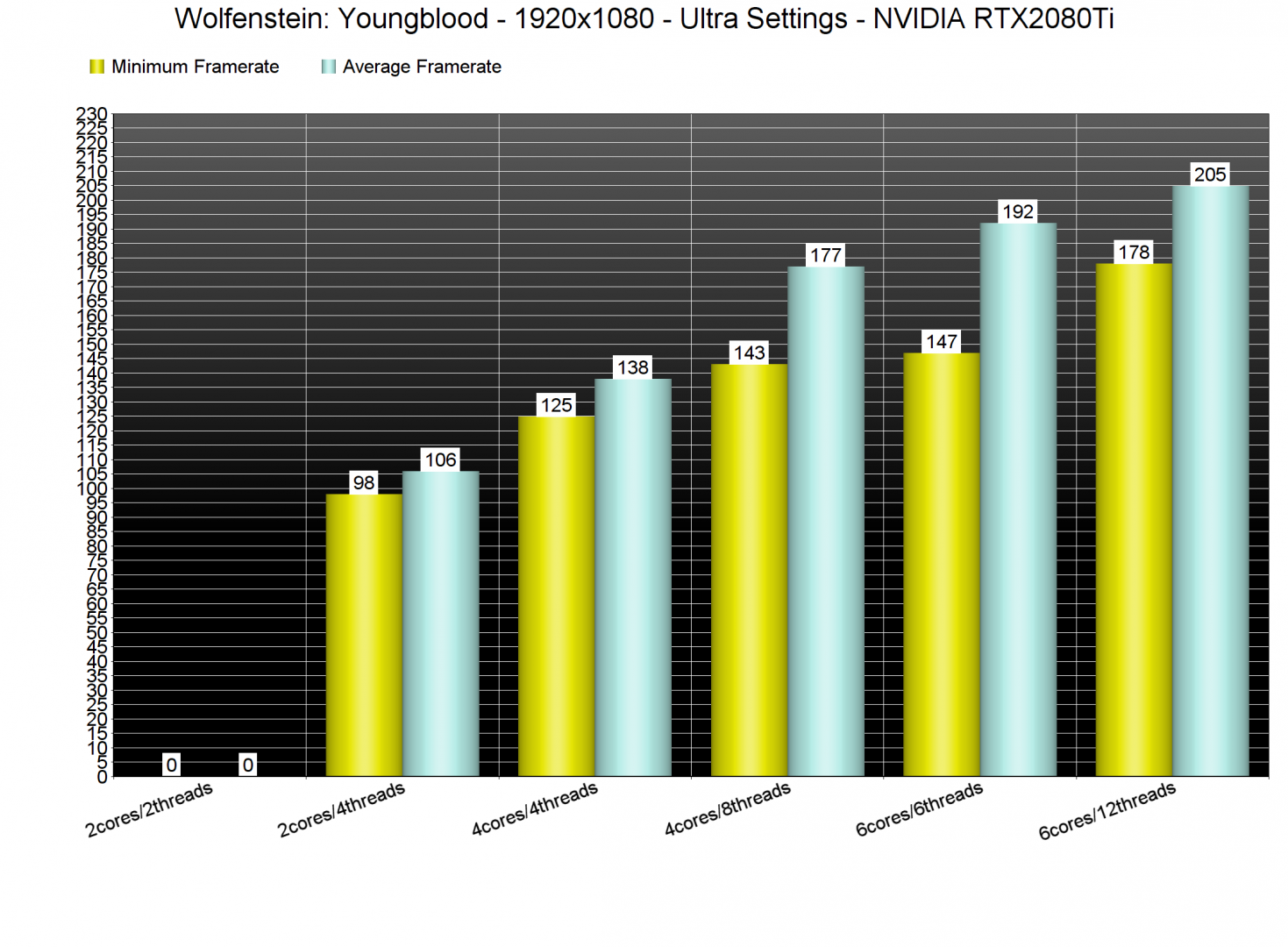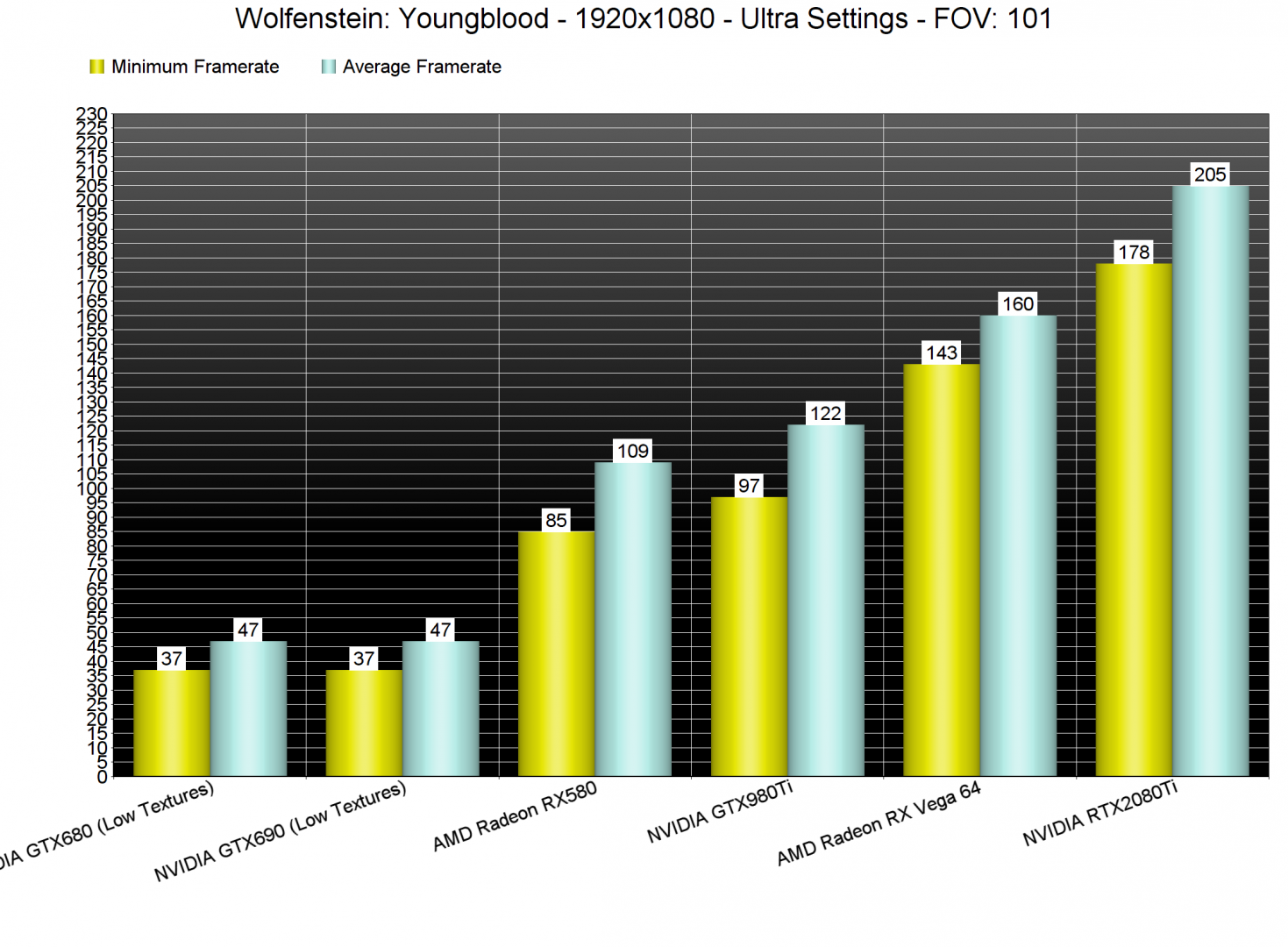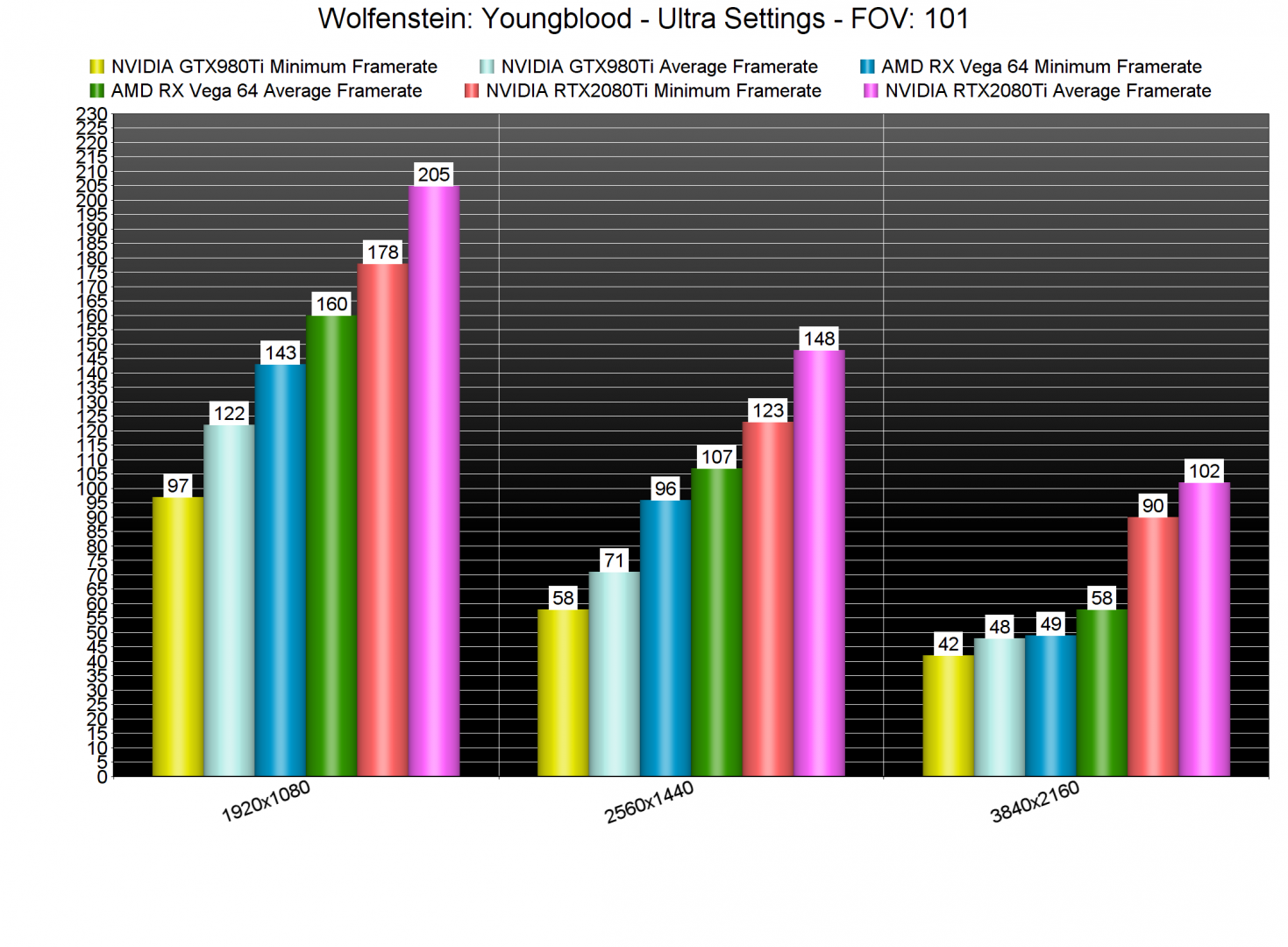Wolfenstein: Youngblood is the latest Wolfenstein game, developed by both MachineGames and Arkane Studios. Powered by the id Tech 6 and using the Vulkan API, it’s time to benchmark this new first-person shooter and see how it performs on the PC platform.
For this PC Performance Analysis, we used an Intel i7 4930K (overclocked at 4.2Ghz) with 16GB of DDR3 RAM at 2133Mhz, AMD’s Radeon RX580 and RX Vega 64, NVIDIA’s RTX 2080Ti, GTX980Ti and GTX690, Windows 10 64-bit, GeForce driver 431.60 and the Radeon Software Adrenalin 2019 Edition 19.7.2. NVIDIA has not included any SLI profile for this title, meaning that our GTX690 performed similarly to a single GTX680.
MachineGames has included a lot of graphics settings to tweak. PC gamers can adjust the quality of Lights, Shadows,Particles, Directional Occlusion, Reflections, Decals, Motion Blur, Image Streaming, Water, Decal/Lightmap/Image Anisotropic Filtering and LOD Switch. There are also options for Chromatic Aberration, Film Grain, Image Sharpening, Resolution Scale, Depth of Field, HDR Bloom, Film Grain, Performance Monitor, Max FPS and FOV Slider. Wolfenstein: Youngblood – alongside the beta of Gears 5 – offer the most advanced graphics settings we’ve seen to date, so kudos to the teams.
In order to find out how the game scales on multiple CPU threads, we simulated a dual-core and a quad-core CPU, and we are happy to report that the game runs silky smooth even on a dual-core CPU (provided you have Hyper Threading enabled) on Ultra settings. Without Hyper Threading, the game was unplayable due to extreme stuttering issues on our simulated dual-core system. Wolfenstein: Youngblood can fully use 6 CPU cores/threads and thanks to its amazing CPU scaling, we saw a major performance boost when we enabled Hyper Threading on our simulated quad-core system.
We are also happy to report that the game does not require a high-end GPU in order to be enjoyed. Our AMD Radeon RX580 was able to push a minimum of 85fps and an average of 109fps at 1080p on Ultra settings. What’s really interesting here is that AMD’s GPUs appear to be running the game exceptionally. Not only that, but even the RTX2080Ti was almost pushed to its limits at 1080p (NVIDIA’s most powerful graphics card was used at 89% in that “low” resolution).
At 1440p, our AMD Radeon RX Vega 64 and NVIDIA GeForce RTX2080Ti had no trouble at all running the game with more than 60fps, whereas there were some minor drops below 60fps on our NVIDIA GeForce GTX980Ti. As for 4K, the RTX2080Ti had no trouble at all running the game, whereas there were noticeable drops below 60fps on the Vega 64. We should also note that we did not use NVIDIA’s Adaptive Shading tech in our benchmarks.
Graphics wise, Wolfenstein: Youngblood looks great, however, it does not really push the envelope of PC graphics. Most of the characters are highly detailed and there are some truly amazing lighting effects (though the quality of Volumetric Lighting appears to be quite low, even on Ultra settings). We’ve also noticed some low quality textures, as well as some “floating” objects (as their shadows did not match up perfectly with the ground). There are numerous lights that can cast shadows, however, there are also some that do not cast any. We do know that NVIDIA is working with MachineGames in order to implement Ray Tracing effects so here is hoping that the teams will use them to enhance the game’s shadows (so that all lights can cast shadows) and global illumination.
All in all, Wolfenstein: Youngblood is one of the most optimized PC games of 2019. MachineGames has offered a lot of graphics settings to tweak and the game can run silky smooth even on dated PC systems thanks to the amazing id Tech 6 Engine and the Vulkan API. Wolfenstein: Youngblood also proves how underused older high-end CPUs – those equipped with six CPU cores that support twelve threads – are in most modern-day triple-A titles. Here is hoping that more developers will follow id Software’s example and make their engines run faster on already existing hardware (you here that Ubisoft? It’s time to abandon DX11 and embrace DX12 or Vulkan).
Enjoy!

John is the founder and Editor in Chief at DSOGaming. He is a PC gaming fan and highly supports the modding and indie communities. Before creating DSOGaming, John worked on numerous gaming websites. While he is a die-hard PC gamer, his gaming roots can be found on consoles. John loved – and still does – the 16-bit consoles, and considers SNES to be one of the best consoles. Still, the PC platform won him over consoles. That was mainly due to 3DFX and its iconic dedicated 3D accelerator graphics card, Voodoo 2. John has also written a higher degree thesis on the “The Evolution of PC graphics cards.”
Contact: Email

